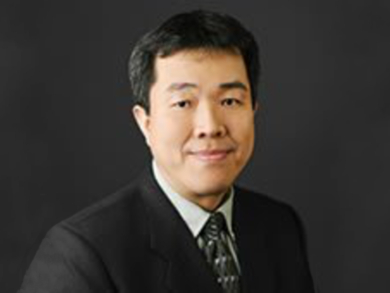Dr. Hayley Charville and Dr. Susanne Poth, Associate Editors for ChemCatChem, talk to Professor Sibudjing Kawi, National University of Singapore, about his recent article in ChemCatChem on catalyzing the water-gas shift (WGS) reaction. The reaction converts carbon monoxide and water to carbon dioxide and hydrogen.
What prompted you to investigate this topic?
The water-gas shift reaction is an industrially important reaction to produce pure hydrogen and is generally followed by a reforming process. To utilize the heat energy from the reforming process, it is advisable to perform the WGS reaction at a similar temperature to that of the reforming process. Generally, the reforming process can be performed between 650 and 800 °C. Hence, we want to develop WGS catalysts that are active and stable at high reaction temperatures.
What is the most significant result described in the article?
The most significant result is the involvement of nickel hydroxyl species, derived from partially reduced nickel phyllosilicate structures, in the promotion of the WGS reaction. We have demonstrated this phenomenon using in situ CO diffuse-reflectance infrared Fourier transform spectroscopy (DRIFTS).
Furthermore, the nickel hydroxyl species are almost fully regenerable during the WGS reaction. This regeneration ability has been clearly observed in sequential CO temperature-programmed reduction (TPR) experiments. Nickel phyllosilicate catalytic materials also generally produce negligible amounts of methane during the WGS reaction compared to other Ni-based catalysts.
What do you consider to be the most exciting development?
Generally, SiO2 is considered to be inert and thermally stable at high reaction temperatures. To obtain the required amount of hydroxyl species for the WGS reaction, researchers have doped the silica support with Na/K-like metal oxides. In our study, there is no need to add any external dopant because some of the nickel species derived from nickel phyllosilicates generate the required amount of hydroxyl species to perform the WGS reaction. Furthermore, the strong Ni–SiO2 interactions in the phyllosilicate structure make the nickel species highly resistant to sintering at high reaction temperatures.
Does this research open other avenues that you would like to investigate?
Yes, the high thermal stability and regeneration ability of hydroxyl species for these kinds of materials motivates us to investigate other steam-reforming reactions. For instance, we have modified the nickel phyllosilicates, using a magnesium salt, by means of a simple hydrothermal treatment. The obtained catalytic material is very active and stable for steam reforming in the bio-gas reaction at 750 °C. Fine-tuning these phyllosilicate structures for porosity and basicity is possible using hydrothermal treatments.
What are the main challenges in the broad area of your research?
The high thermal stability of the materials, anti-sintering, and anti-coking are the main challenges for many reforming reactions. For the nickel-based high-temperature WGS catalyst, the two main challenges of the catalyst performance are ensuring a high thermal stability of the catalyst and suppressing methane formation.
What other topics are you working on at the moment?
Besides the WGS reaction, we are also working on the development and understanding of the catalyst systems for steam, CO2, and bi-reforming of lighter hydrocarbons, steam reforming of methanol/ethanol, CO2 hydrogenation, biomass tar reforming, and gasification reactions. We are also working on the development of perovskite-based selective O2 permeation and Pd-based selective H2 permeable membrane systems to be integrated with our newly developed catalysts for energy-efficient syngas and hydrogen production.
Thank you for the interview.
- Promotion of the Water-Gas-Shift Reaction by Nickel Hydroxyl Species in Partially Reduced Nickel-Containing Phyllosilicate Catalysts,
Jangam Ashok, Ming Li Ang, Puar Zhi Liang Terence, Sibudjing Kawi,
ChemCatChem 2016, 8, 1308–1318.
DOI: 10.1002/cctc.201501284Professor Kawi and colleagues have investigated the role of surface hydroxyl species generated by partially reduced nickel-containing phyllosilicate structures for the promotion of the WGS reaction and methane suppression. The best catalyst of this type showed superior performance compared to previously reported materials in terms of its turnover frequency and the rate of hydrogen formation.




